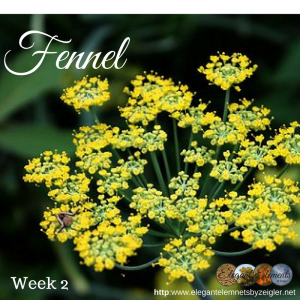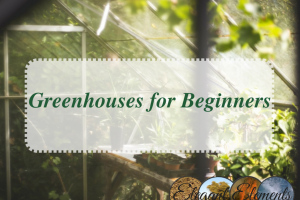Fennel – Ever heard of it? If you aren’t into cooking, then odds are, you have not. I first learned about it when I was delving into the world of essential oils. I quickly learned that this herb is a powerful carminative. But more importantly for me at that time was it’s ability to help with cramping and bloating for women who are miserable “that time of the month.”
So let’s take a look at this pretty little yellow herb and what exactly you can do with it from stem to stern or in this case from seed to harvest.
First things first…you have to know how to plant it right??
HOW TO PLANT
Fennel actually responds very well when planted directly from seed. When spring arrives and the soil is warmed through after winter (around the first of May), plant your seeds. Soaking them (1 to 2 days) prior to planting, encourages a better chance of successful germination (actual sprouting of the plant). Make sure to water the seeds well to keep them moist. Depending on the size of your desired crop, consider spreading them apart, roughly 12 to 18 inches when they are seedlings. Flowering of your plants will take place in around 90 days. This may seem like a long time, but believe me, it rolls around quick!
HOW TO HARVEST
There are actually two different kinds of fennel. One is simply referred to as herb fennel. Just about the entire plant can be used with herb fennel from the wispy-like or feathery fronds to the flowering heads that can be hung and dried to reap the seeds. Check out five ways to use the fronds below.
Top 5 Ways to Use Fennel Stalks & Fronds
Most recipes with fennel, like our Shaved Fennel, Roasted Tomato, and Pistachio Salad from yesterday, focus on the crunchy bulb, leaving us in a lurch when it comes to the leftover stalks and fronds. Fennel tops are tasty too! No sense in letting these greens go to waste.
The other (Florence fennel) is harvested for its bulb and can be harvested as needed by cutting away the feathery foliage. If you’ve heard of fennel seed and you want to utilize that part of the plant, let it flower and once the flowers have turned brown, cut and put them in a paper bag. Make sure your bagged herb is placed somewhere dry and cool. It won’t take long for the seeds to drop off, then clean and store. This type can be harvested when the “bulb” has reached the size of approximately a small tennis ball. Your bulbs can actually be put away for storage in a cool spot up to several weeks.
HOW TO DRY
There are actually two ways to dry fennel. You can use your oven! Simply place stalks (with trimmed away greenery) evenly on a baking sheet and set on a low setting for 3 hours. Complete your drying by turning off the oven and letting set overnight. The other option is to tie stalks together and hang for drying until the stalks are brittle to the touch.
COOKING USES
Below is a great video on how to work with amazing herb.
MEDICINAL BENEFITS
So now that we’ve talked about how to plant, harvest, dry and cook with it…what about medicinal benefits? Are there any? You betcha! From this point on, when you think “fennel” think RELIEF! This amazing plant is one of the most powerful and helpful carminatives that you will find.
It is well known for its antispasmodic, antidepressant and anti-microbial properties. Known for helping milk flow in nursing mothers – it also produces a warming and calming effect to an upset tummy.
Other Links for Fennel:
15 Impressive Fennel Benefits
The health benefits of fennel include relief from anemia, indigestion, flatulence, constipation, colic, diarrhea, respiratory disorders, menstrual disorders, eye care, etc. Fennel, bearing the scientific name Foeniculum Vulgare Miller, or its essence, is widely used around the world in mouth fresheners, toothpastes, desserts, antacids and in culinary.Apart from these uses of fennel, there are numerous medicinal uses and health benefits, mainly due to the components of its essential oils, which can be summarized as under.
Fennel Benefits, Nutrition & Recipes
Fennel is a celery-like winter vegetable with an interesting licorice-like flavor. Although the taste may take some getting used to at first, fennel provides an enormous amount of health benefits. Fennel is recognized by its white bulb and long green stalks. It is related to other stalk vegetables such as celery and parsnips.
As you can now see, fennel is definitely a great little herb to look into growing. It thrives with very little care; is easy to harvest and dry; has a variety of ways that it can be prepared in cooking and lastly offers a lot of medicinal value. Instead of heading to your local Walgreens or Rite Aid when you have an upset tummy, maybe you will now consider planting and harvesting your own fennel instead!
What impresses you most about this delicate little plant?
Oh did I tell you? It smells WONDERFUL too!
Did you know that fennel is also an essential oil? You can purchase yours here.
Need to catch up on this series?



Recent Comments